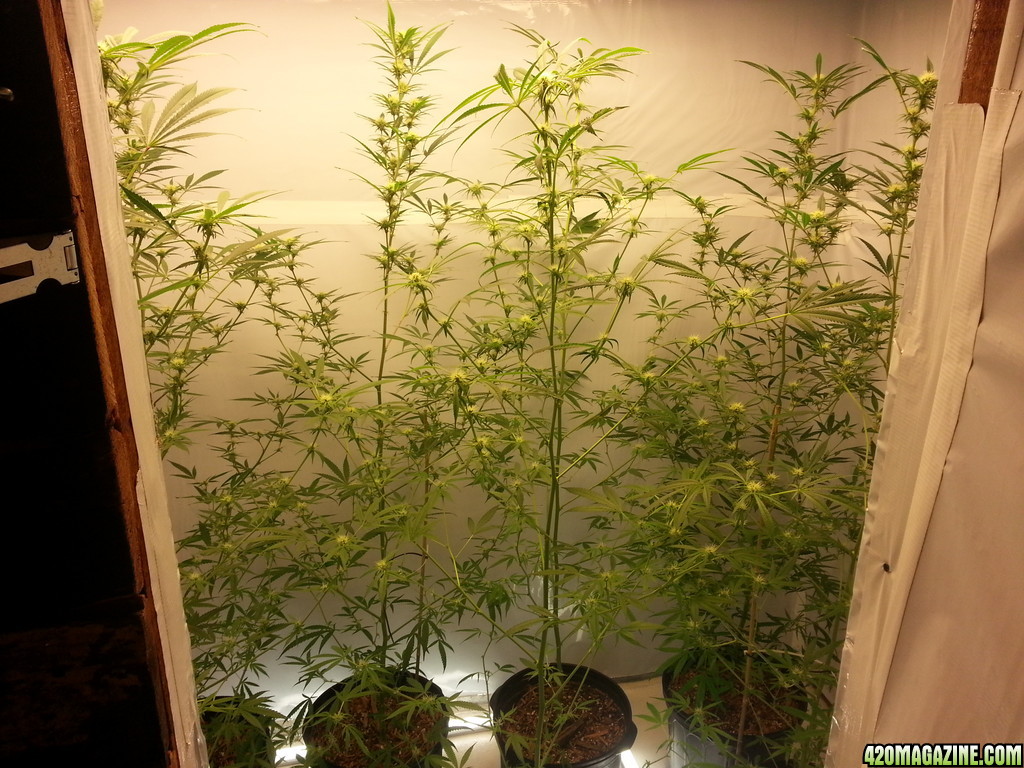Im a noob, so please keep that in mind, I have spent about 2 months reading threads and appreciate the hell out of all the Info and Knowledge ive obtained, I have 7 plants (5 Gallon buckets) 4 Blueberry & 3 Medijuana all between 38'' & 48''...with that said I need some opinions.... I am using The Recipe for Success Kit only for Nutes...And only use Rain water...
~Question 1- How do my girls look? (21 days of 12/12 under 3000k Bloom Bulb (8 tube 4ft) T5)
~Question 2- They are massive (30 days of 24/7 6500k Veg bulbs T5 same unit im using for flowering)...Should i take out the bottom branches? Ive seen it done alot were u can see thru the bottom of the plants. I have only done it to 1 plant about 8 inches up from the dirt. Something about it makes the top buds grow bigger...but alot of the lowers are starting to get buds but i can see that the light dont get all the way down there...
~Question 3- How often should I spray them while they are flowering with the water bottle (pure rain water)? I usually do when I water them once a week...
~ Question 4- What leaves should i be removing for maximium yield if any? Any pruning advice while flowering would be awesome..










~Question 1- How do my girls look? (21 days of 12/12 under 3000k Bloom Bulb (8 tube 4ft) T5)
~Question 2- They are massive (30 days of 24/7 6500k Veg bulbs T5 same unit im using for flowering)...Should i take out the bottom branches? Ive seen it done alot were u can see thru the bottom of the plants. I have only done it to 1 plant about 8 inches up from the dirt. Something about it makes the top buds grow bigger...but alot of the lowers are starting to get buds but i can see that the light dont get all the way down there...
~Question 3- How often should I spray them while they are flowering with the water bottle (pure rain water)? I usually do when I water them once a week...
~ Question 4- What leaves should i be removing for maximium yield if any? Any pruning advice while flowering would be awesome..






















